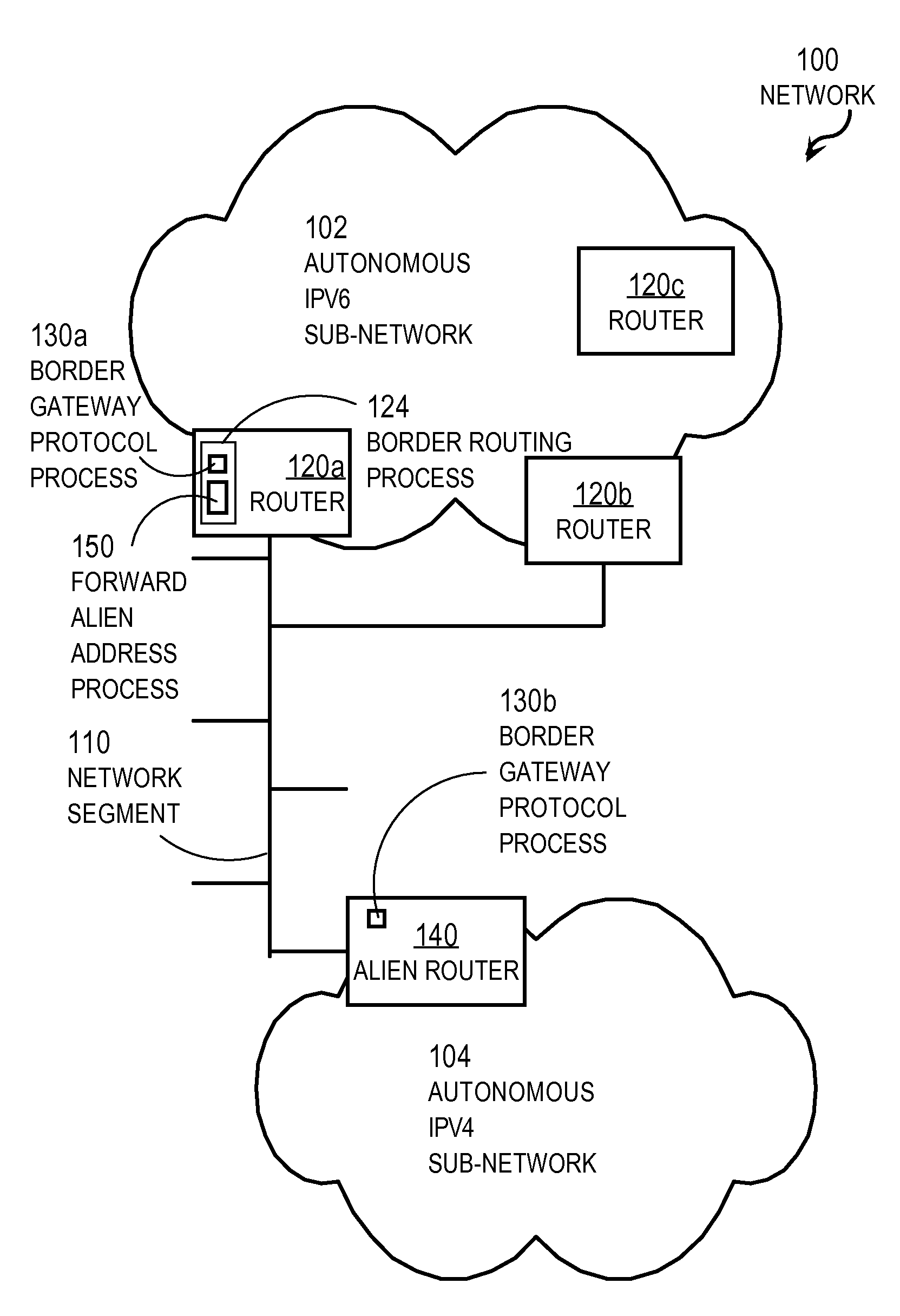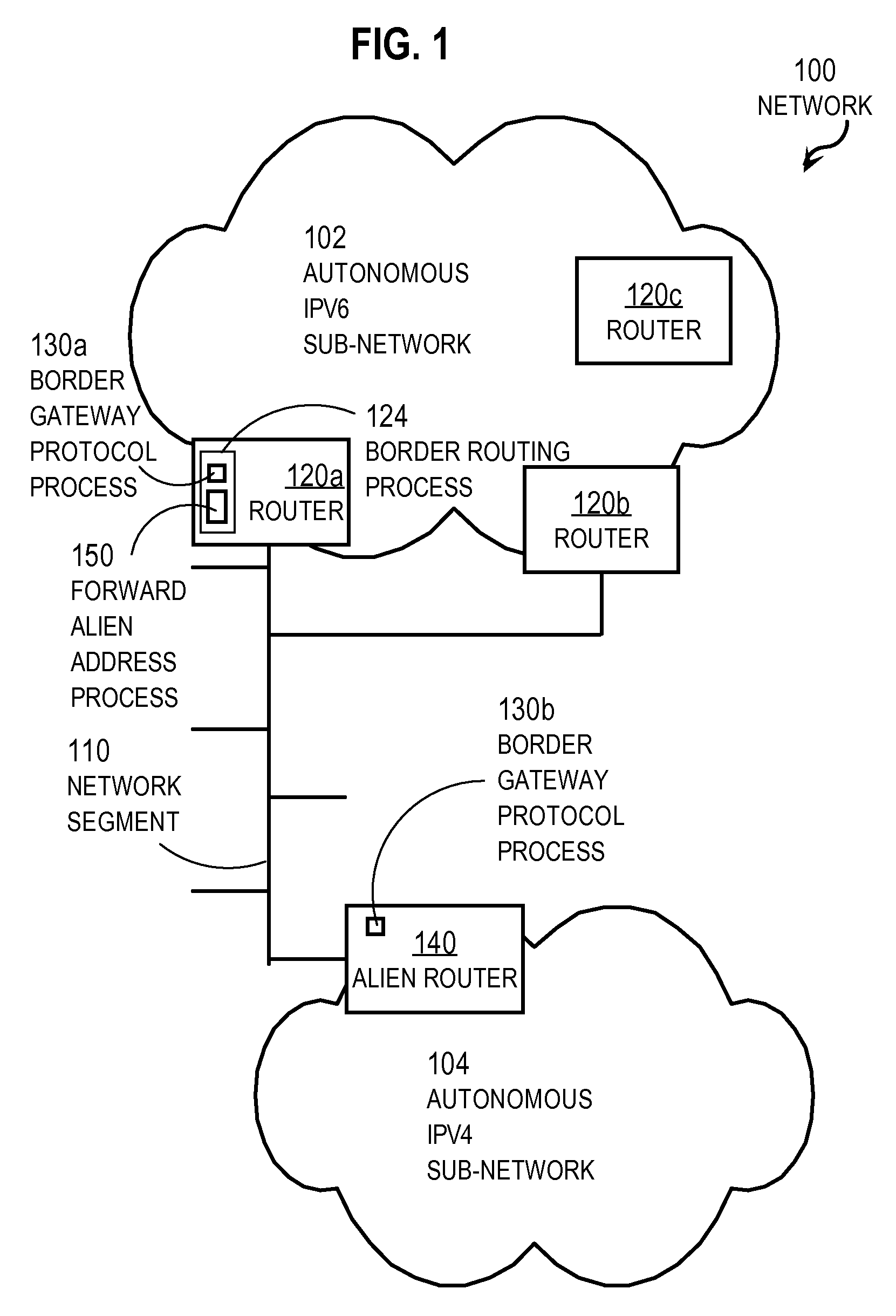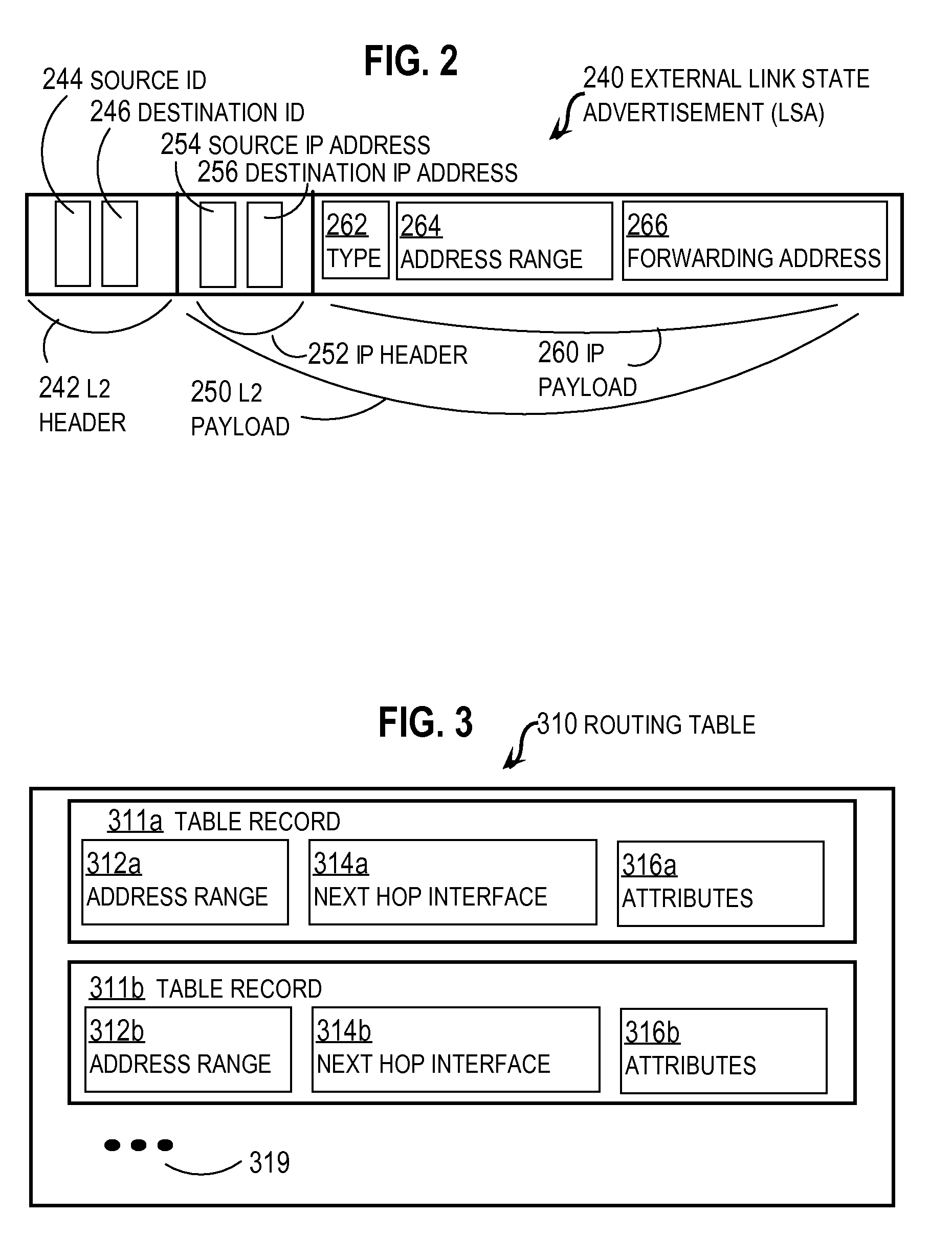Setting a forwarding address in an internet protocol version 6 (IPv6) routing protocol domain at a boundary with a different routing protocol domain
a routing protocol and internet protocol version 6 technology, applied in multiplex communication, time-division multiplex, electrical devices, etc., can solve the problems of not being able to achieve optimal routing and the inability to utilize forwarding addresses in current ipv6 routing protocols
- Summary
- Abstract
- Description
- Claims
- Application Information
AI Technical Summary
Benefits of technology
Problems solved by technology
Method used
Image
Examples
Embodiment Construction
[0017]A method and apparatus are described for setting a forwarding address in an IPv6 domain at a boundary with a domain using a different routing protocol. In the following description, for the purposes of explanation, numerous specific details are set forth in order to provide a thorough understanding of the present invention. It will be apparent, however, to one skilled in the art that the present invention may be practiced without these specific details. In other instances, well-known structures and devices are shown in block diagram form in order to avoid unnecessarily obscuring the present invention.
[0018]An embodiment of the present invention is described in the context of OSPFv3 as an IPv6 routing protocol and EIGRP as an IPv4 routing protocol, however, the invention is not limited to this context. In other embodiments, any IPv6 routing protocol that uses a forwarding address is used in conjunction with any different routing protocol.
1.0 OVERVIEW
[0019]In one set of embodime...
PUM
 Login to View More
Login to View More Abstract
Description
Claims
Application Information
 Login to View More
Login to View More - R&D
- Intellectual Property
- Life Sciences
- Materials
- Tech Scout
- Unparalleled Data Quality
- Higher Quality Content
- 60% Fewer Hallucinations
Browse by: Latest US Patents, China's latest patents, Technical Efficacy Thesaurus, Application Domain, Technology Topic, Popular Technical Reports.
© 2025 PatSnap. All rights reserved.Legal|Privacy policy|Modern Slavery Act Transparency Statement|Sitemap|About US| Contact US: help@patsnap.com



